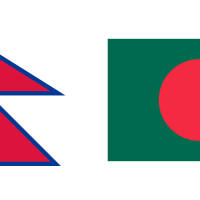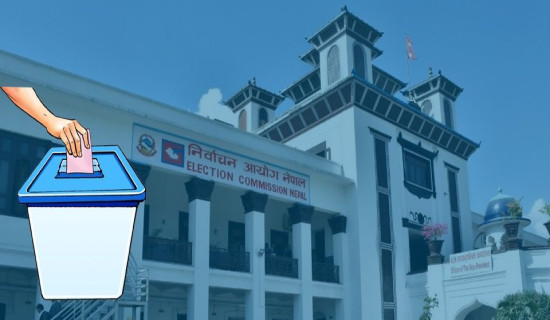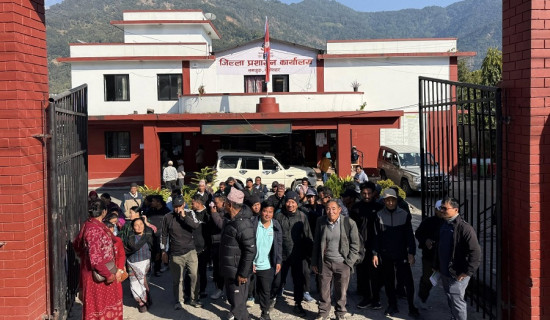- Saturday, 20 December 2025
Local Government Under The Federal Republic
One of the significant features of the Federal Democratic Republic of Nepal is a local government with constitutionally fixed jurisdiction. Unlike the term local bodies, the new Constitution promulgated by the Constituent Assembly in 2015 introduced the concept and practice of local government under the federal structure. Nepal practiced decentralisation and local self-governance under unitary and centralised political systems. The new constitution inserted the provision of local government, envisioning that the new practice would be more democratic and provide more effective delivery to the people. However, the concept of local government came into practice under the new federal structure, which had constitutional governmental rights like executive, legislative, and judicial exercise at the local level.
Our local government is recognised by the constitution as having taxation power. The practice of legislature means there is a practice of getting approval of plans, programmes, and budgets from assemblies; elected representatives have the right to implement the plans; and there is the provision of judicial committees to play the role of judicial body. So, there is a complete package of governance under our federal structure. In other words, it is called a separate constitutionally identified governing body having independent status to govern under specified jurisdiction by exercising the powers enshrined in the Constitution of Nepal.
Local government, which is a medium to reach government to the doorsteps of the people, is often called democracy at the grassroots. In the context of Nepal, it is also a medium to bring Singh Durbar to the yards of the people or villages. Democracy cannot be imagined without the election, formation, and execution of local governments or units. It is an important and indispensable pillar of the vertical power sharing model under democratic governance. Thinkers and practitioners of the governance system stress the importance of effective local governments to cope with the challenges of society, ranging from poverty eradication to vulnerability induced by pandemic diseases and natural disasters. Provisions of local governments are stated in the constitution, illustrating their powers, which also gives autonomy to the local units to perform duties independently.
Constitutional provision
As Part 5 of the Constitution has arranged the structure of state and devolution of state power, Article 56(1) of the Constitution defines that the main structure of the federal democratic republic of Nepal shall be of three levels, namely the Federation, the State, and the Local level. All three spheres of government exercise the power of the state of Nepal pursuant to the constitution and the law. There are 22 exclusive powers of local-level governments under the constitution of Nepal. They include: town police; cooperative institutions; operation of local taxes (wealth tax, house rent tax, land and building registration fee, motor vehicle tax), service charge, tourism fee, advertisement tax, business tax, land tax (land revenue), penalty, entertainment tax, and land revenue collection. Currently, Nepal has 753 local levels, which are also called local governments, the initial tier of government under the three-tier governance system under the Constitution of Nepal. Rural executives and municipal executives are called local governments. Six metropolitan cities, 11 sub-metropolitan cities, 2,76 municipal executives, 460 village executives, also called rural municipalities, and 3,743 wards are in charge of handling local governments under the jurisdiction set by the constitution.
Judicial committee
The judicial committee is an important asset of the federal Constitution of Nepal. It is a unique, challenging, and ambitious feature that is enshrined in the constitutional as well as legal provisions of the country. Some of the opportunities for the judicial committee at the local level are stated below.
Ensuring access to justice: It is a means of delivering justice to the doorsteps of the people by settling local disputes. Delivering prompt justice from the nearest institution to the people will definitely help promote access to justice for the people.
Less expensive: Handling cases by the judicial committee will be less expensive and more effective. The provision of justice delivery through judicial committees at local levels is comparatively less expensive than delivering justice through the court mechanism at district or higher levels.
More effective: It is effective in the sense that the local representatives or officials can understand the local context by observing first-hand information before discharging justice. Understanding the local context definitely helps pass justice in an effective manner. In this sense, it will be more convincing as well as trustworthy.
Ownership and participation: Justice delivery at the local level invites people's participation. Deputy chiefs of village executives and municipalities take on the responsibility of the judicial committee, and they are elected by the people. So there is direct and indirect participation by people in the justice delivery system. This system of people's participation helps promote ownership of people and their participation.
Helps reduce conflict: The local-level justice delivery system is helpful to reduce conflict in society because there is timely delivery of justice in the locality of people. If disputes are settled on time, it will definitely reduce multiple levels of conflict in society. If there is a reduction in conflict at the local level, the entire nation will see peace and prosperity.
Reduced burden of courts: There are several reports that formal courts are overburdened with cases. People often complain of delays in justice delivery. Effective implementation of judicial committees at the local level will reduce the burden on courts at the district and other levels.
In conclusion, the work of local governments is more effective and significant in implementing the federal constitution promulgated by the Constituent Assembly. They prepare budgets, make plans, hold discussions, and reach approval with due process. Some local governments are introducing innovative programmes by utilising local resources. For instance, some activities in Kathmandu Metropolitan City have become a centre of attraction, especially in the area of the preservation of culture and public property. The activities of local governments during pandemics and disasters have been seen to be more effective. Making local government more effective in the days to come will be more fruitful for sustaining the Federal Republic of Nepal. However, double taxation and duplication of jurisdiction among the multiple layers of governments under the federal structure should be checked.
(Upadhyaya is an Associate Editor at The Rising Nepal.)




-square-thumb.jpg)












